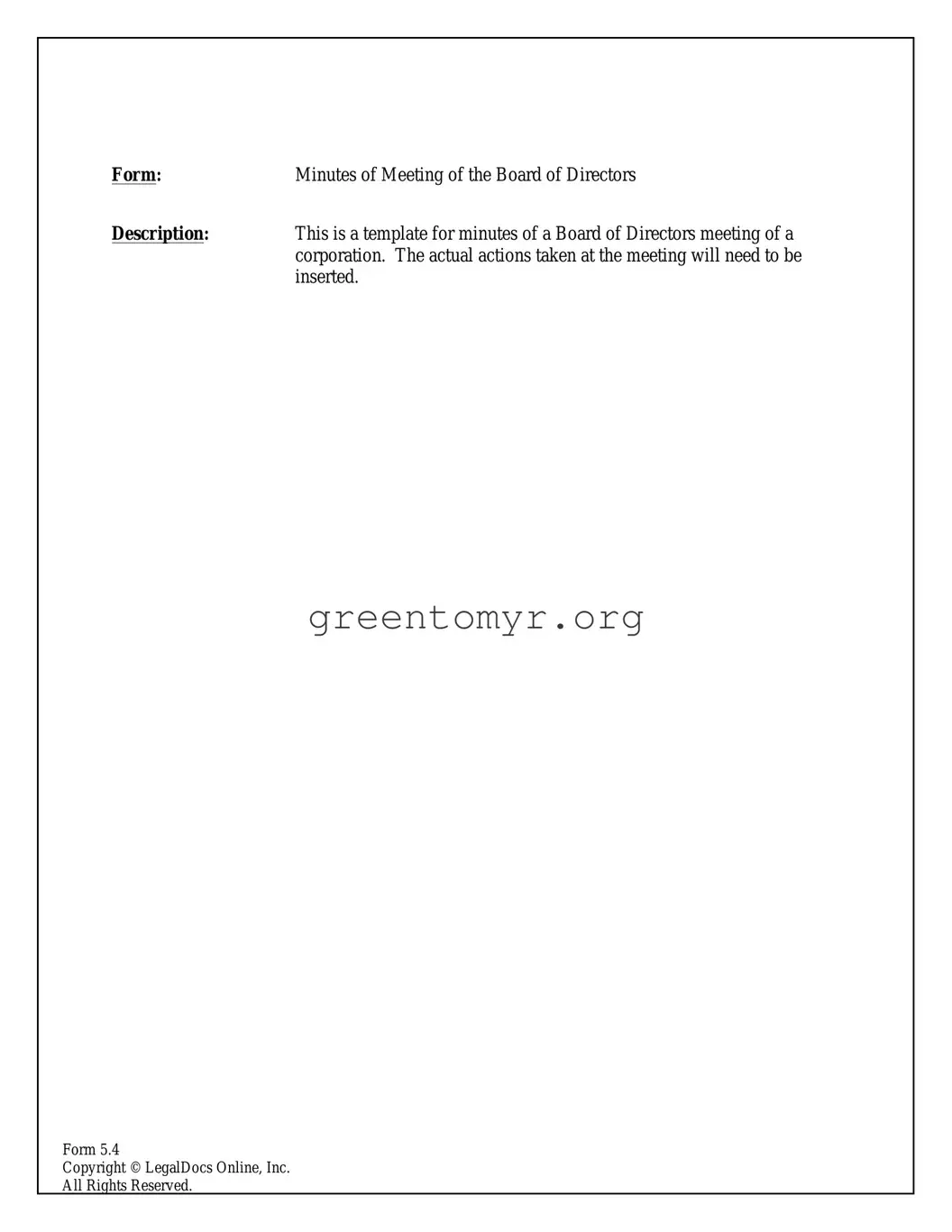Form: |
Minutes of Meeting of the Board of Directors |
Description:This is a template for minutes of a Board of Directors meeting of a corporation. The actual actions taken at the meeting will need to be inserted.
Form 5.4
Copyright © LegalDocs Online, Inc.
All Rights Reserved.
MINUTES OF [REGULAR] [SPECIAL] MEETING OF THE
BOARD OF DIRECTORS OF
[NAME OF CORPORATION]
The Board of Directors of [Name of Corporation] held a [Regular] [Special] meeting on [Date], at [Time], at [Place].
The following directors were present and constituted a quorum of the Board:
[Names].
The following directors were absent from the meeting: [None] [Names].
The following individuals also were present at the meeting: [Names and Titles].
[The chairman] [ ______________ acted as chairman and] called the meeting to
order and announced that this meeting was held pursuant to a written notice of meeting which was given to all directors of this corporation. A Copy of this notice was ordered inserted in the corporation’s Minute Book immediately preceding the minutes of this meeting.
[If this meeting was held without notice, the following paragraph should be inserted, substitution the prior paragraph: The chairman called the meeting to order an announced that this meeting was held pursuant to written waiver of notice and consent to the holding of this meeting. The waiver and consent was presented to this meeting and, on a motion duly made, seconded, and [unanimously] carried, was made a part of the records and ordered inserted in the corporation’s Minute Book immediately preceding the records of this meeting.]
[The minutes of the last meeting of the last meeting of directors were then read and approved.] [The minutes of the last meeting, having been distributed to all directors, were approved as so distributed.]
[If applicable: The chairman stated that the election of officers was in order. The Board then proceeded to nominate officers of this corporation. The following nominations were made and seconded:
No further nominations were made, and the persons named above were [duly/unanimously] elected to the offices set forth opposite their respective names.]
The Board then discussed [insert business transacted, for example, establishment of committee, adoption of share purchase agreement, approval of employment agreement, etc.].
On motion duly made and seconded, the following resolutions were adopted:
[Insert resolutions].
1
Form 5.4
Copyright © LegalDocs Online, Inc.
All Rights Reserved.
ADJOURNMENT
Because there was no further business to come before the Board of Directors at this meeting, on motion duly made and seconded, the meeting was adjourned.
Date:
[Secretary’s Name], Secretary
2
Form 5.4
Copyright © LegalDocs Online, Inc.
All Rights Reserved.



